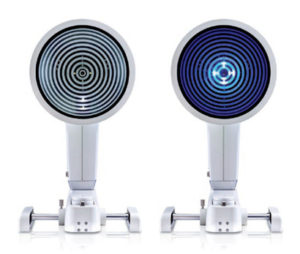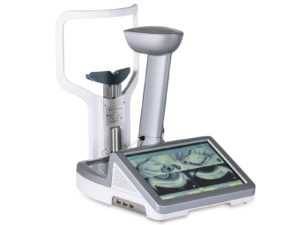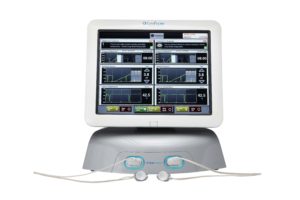Dry Eye Syndrome
Dry eyes or Dry Eye Syndrome (DES) is an ongoing condition with symptoms that include dryness, scratchiness and burning. We take a personal approach to find out the root cause of your dry eye and create a treatment plan that matches the severity level of the disease.
Our Focus on Research and Technology
At Snyder Eye Group we use state-of-the-art instrumentation and stay current on the best medical treatments and techniques. After a comprehensive examination using the advanced diagnostic tools provided by the Keratograph, LipiScan, and other tools, our doctors can more accurately assess the precise cause and severity of your dry eye and recommend the best course of treatment to address your specific problem.
Our OCULUS Keratograph is a high-resolution color camera equipped with intelligent software measuring ocular redness, tear production levels, and meibography (infrared scan of the upper and lower lids providing an x-ray like image of the glands inside of the eyelids). It also calculates tear film stability by taking a video of the tear evaporation. A picture of the lower eyelid measures the amount of tears the eye produces. Our doctors can use this data to monitor the success of the dry eye treatment and measure the quality and stability of the eye’s tear film.
Our LipiScan is a purpose-built machine that is second-to-none in imaging the meibomian glands. Similar to the infrared scan the OCULUS Keratograph is capable of, the LipiScan goes a step further and performs trans-illuminated scans of the meibomian glands. This allows us to not only see the overall shape of the gland, but also the individual sacs that compose the gland and produce the oils.
For many people, LipiFlow means relief. LipiFlow treats the leading cause of Evaporative Dry Eye, not just the symptoms. The LipiFlow Thermal Pulsation System is the only FDA approved device to treat Evaporative Dry Eye caused by Meibomian Gland Dysfunction (MGD). Opening and clearing blocked glands allows the body to resume the natural production of lipids (oils) needed for the tear film. The result may eliminate the uncomfortable symptoms associated with Evaporative Dry Eye.
Dry Eye Symptoms
- Blurry Vision
- Redness
- Fluctuating Vision
- Itching
- Light Sensitivity
- Excessive Tearing or Watery Eyes
- Tired Eyes
- Stringy Mucous in or Around the Eyes
- Foreign Body Sensation
- Contact Lens Discomfort
- Scratchy, Sandy or Gritty Eyes
Dry Eye Causes
- Systemic Disease: Diabetes, Arthritis, Lupus, Sjögrens Syndrome, Graft vs Host Disease (GVHD), Steven Johnson Syndrome, Thyroid Disease, Allergies, Hypertension, etc.
- Medications: Antidepressants, Antihistamines, Antipsychotics, Hormonal Medications, etc.
- Aging
- Hormonal Changes/Menopause
- Rosacea
- Smoking
- Contact Lens Wear
- Dietary: Improper consumption of more Omega 6 fatty acids (found in fried foods and fast food) to Omega 3 fatty acids (naturally found in fish and nuts), dehydration
- Environmental Factors: Visual tasks (computer work), geography, work environment, temperature, low humidity
- LASIK
Dry Eye Treatments
- Artificial tears
- Bruder heat mask
- Omega-3 fish oils
- LipiFlow


